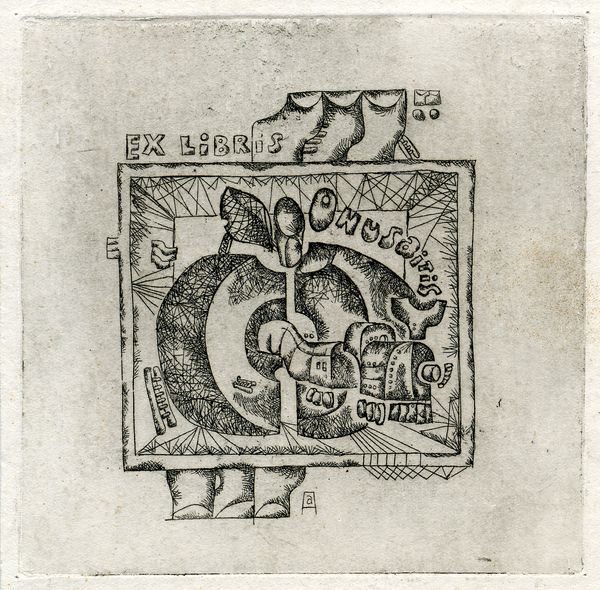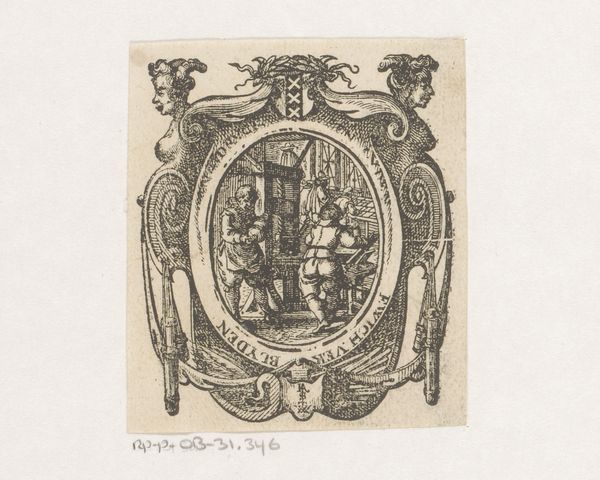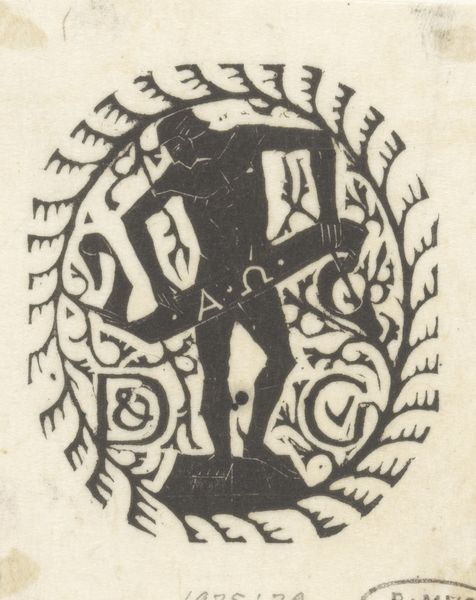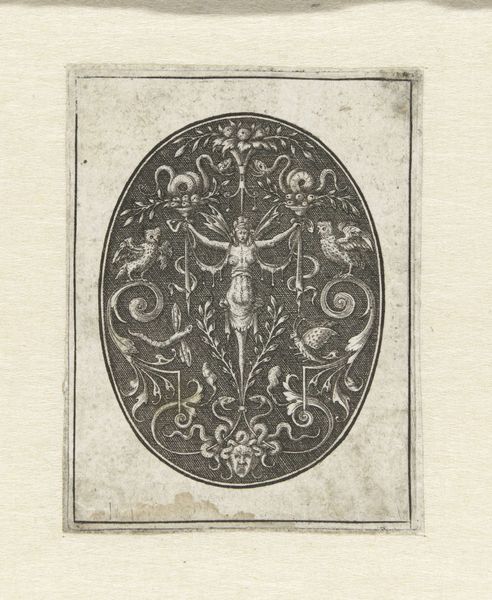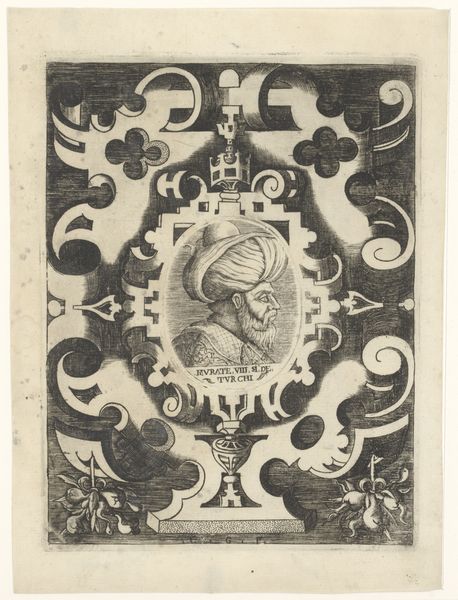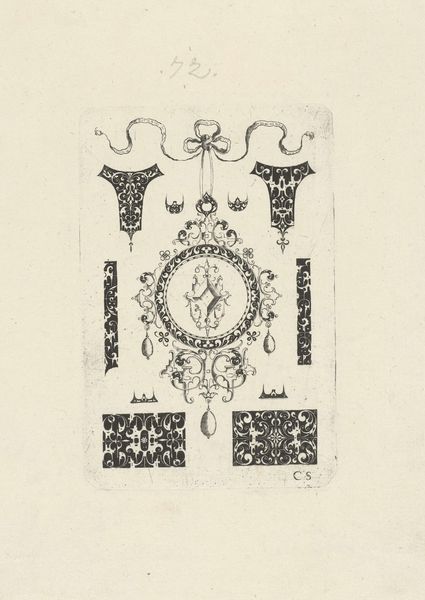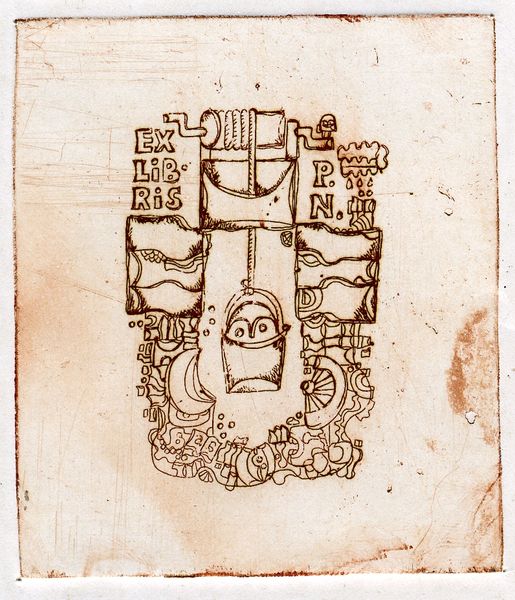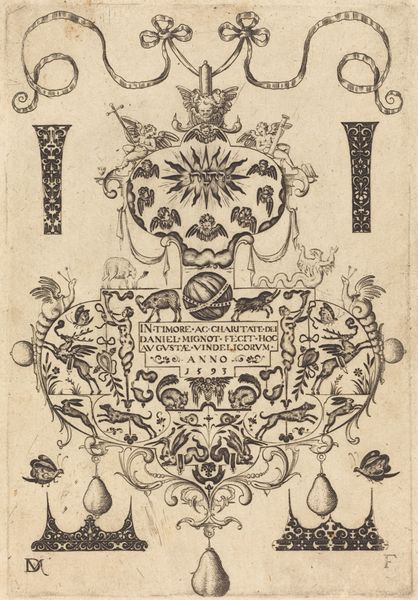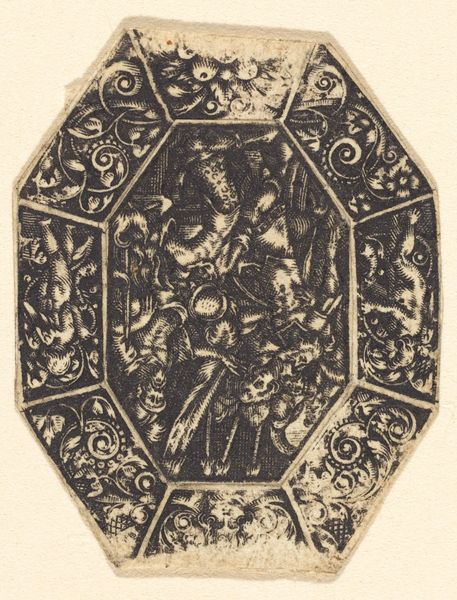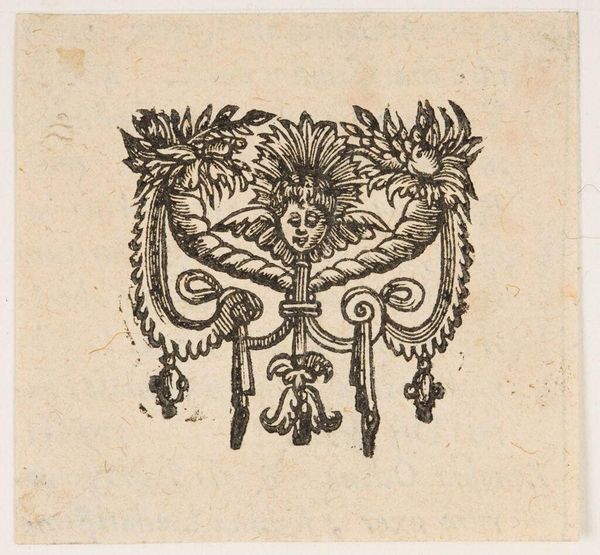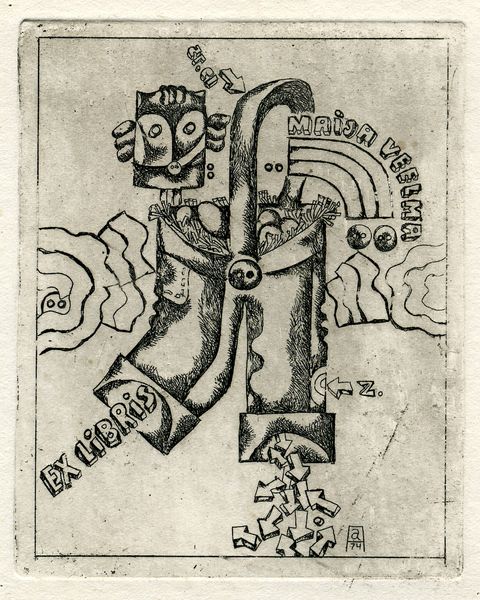
drawing, graphic-art, print, ink, engraving
#
drawing
#
graphic-art
#
comic strip sketch
#
quirky sketch
# print
#
pen illustration
#
pen sketch
#
figuration
#
personal sketchbook
#
ink
#
sketchwork
#
geometric
#
pen-ink sketch
#
pen work
#
sketchbook drawing
#
sketchbook art
#
engraving
Copyright: Oleksandr Aksinin,Fair Use
Curator: Looking at this engraving, "Exlibris of Sinushina," crafted by Oleksandr Aksinin in 1974, I’m immediately struck by its blend of the surreal and the deeply personal. Editor: It’s utterly bizarre, isn’t it? A birdcage containing… what *is* that? Some sort of human-animal hybrid, or maybe a steampunk angel gone wrong. I dig it! There's this confined energy but those little faces escaping. Like tiny rebellious thoughts. Curator: Aksinin, part of the Lviv graphic art school, often explored themes of confinement and the grotesque under the restrictive Soviet regime. "Exlibris," meaning "from the books of," functions here as a personal emblem, suggesting the owner’s intellectual world is perhaps caged or distorted. The grotesque imagery prevalent during that era was sometimes employed as subtle anti-establishment statement. Editor: Caged, definitely. But maybe caged imagination births even more insane stuff? I mean, look at the linework, the scratchy quality, the absurdity of the scene – it’s bursting with… weird creativity! I keep looking at the almost pathetic but very large eyes and it evokes this mixture of pity and fascination. You kinda root for this creature. Curator: Precisely. Consider the cultural context. Aksinin, denied official recognition, worked underground. This ex-libris can be viewed as a quiet act of defiance. The birdcage, repeated in much dissident art from the Soviet bloc, becomes a powerful symbol for repressed ideas. Editor: I love how nothing makes *logical* sense, and yet there's this emotional resonance. The way those tiny face spirits or what-nots stream away… I sense almost this urgent message about escape, or liberation? What Aksinin’s suggesting may not be something he himself fully realizes; yet it’s profound. Art is so very cool in how we discover or invent the intentions after the act, or maybe it invents *us*. Curator: Yes. The reception of his art is influenced by the sociopolitical. He found a clandestine audience that understood the nuanced ways an image can be interpreted. This print acts not only as an ownership mark, but also a statement, hinting that knowledge and expression may be limited by some sort of a higher authoritarian structure. Editor: Agreed. Seeing art is to find out what is meaningful or thought-provoking to yourself in the long run. Curator: Thank you. Editor: Indeed. Thank you as well.
Comments
No comments
Be the first to comment and join the conversation on the ultimate creative platform.
